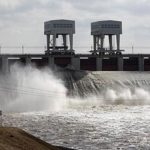ISLAMABAD: According to a plan submitted to the National Electric Power Regulatory Authority (Nepra), the share of cheaper hydropower in the national power mix is likely to decline to about 20 per cent from 30pc at present by the fiscal year 2040 due to the negligible role played by private sector as the government attempts to renegotiate terms of contracts with thermal power producers.
Because of low economic growth forecast for the coming years, the government has slashed estimates for electricity demand by 2040 to 390,240 gigawatt hours (GwH) from about 458,000Gwh estimated in June last year. Accordingly, the National Transmission and Dispatch Company (NTDC) has estimated that power generation capacity will have to be increased to about 62,000MW by 2040 instead of about 98,000MW under the previous plans.
These estimates are part of the Indicative Generation Capacity Expansion Plan (IGCEP) 2047 submitted by the NTDC to Nepra for approval.
NTDC estimates that generation capacity will have to be increased to 62,000MW by 2040 instead of 98,000MW as envisaged earlier
Interestingly, the plan shows that addition in hydropower capacity over the next 20-27 years would mostly come through public sector investments, including in dams. The plan estimates the share of hydropower in the total power mix at about 30pc, which it says is likely to drop to 26pc by FY2035 and further down to 20pc by 2040.
ARTICLE CONTINUES AFTER AD
This appears to be a repeat of the situation in the 1990s when private sector investments were practically blocked as the government fought with (thermal) independent power producers (IPPs) over high tariffs (about 6 cents per unit) and higher than required capacity contracts. The-then government reneged on its announced upfront tariff of 4.7 cents per unit for hydropower plants and instead asked existing investors to accept 3.3 cents per unit tariff or quit. As a result, about a dozen investors packed up. There was no hydropower capacity addition except in the public sector.
Meanwhile, the mandarins in the power division or energy ministry, who inducted 90pc of new power generation capacity in the last 10 years on import-based power plants and gave them “must run” status against the national policy of “merit order”, have again created a similar environment to divert attention from the loss-making, inefficient and corrupt public sector bodies.
Under regulatory requirements, the key objective of the IGCEP is to come up with a national power generation plan that ensures sufficient generation capacity on a least cost basis to meet demand in the country so that there is no excessive capacity over and above what is required to ensure system stability and operational integrity.
The report envisages a target of 30pc renewables (wind, solar, small hydro and biomass) by 2030 even though this is not achievable in the next 10 years, because 78pc of the projects are not based on feasibility studies or site confirmations. The candidate projects include schemes of 37,160 MW (60pc) wind, solar and coal-based IPPs which are “expected” plans without any sponsors, locations or financing. Another schemes of 22,772 MW (37pc) reflect public sector hydropower projects but we are familiar with delays and cost and time overruns caused due to paucity of funds and financial resources.
The IGECP report indicates that total projects to be added to meet the demand by 2040 are of 79,449MW capacity. Of these projects of 15,118 MW capacity are under construction or have achieved financial close, have been issued letters of support (LOS) or letters of intent (LOI) for 2,800MW, and public sector hydel 23,407MW, leaving a shortfall of 37,160MW.
After filling the gap arbitrarily, the authorities feel comfortable to claim that the demand/supply requirements till 2040 have been accounted for without realising that there is a yawning shortage of 37,160MW, which must be filled with actual projects, sponsors, sites and LOI/LOS which signify some certainty that the projects will indeed come on line.
Interestingly, hydropower projects of more than 50MW are not considered as renewable projects under the proposed plan. “The approach and assumptions adopted in IGECP report appear risky and dangerous as this will produce inaccurate and imprecise results and ultimately lead to expensive surpluses or costly power shortages,” said a former Nepra member. He said the move would affect major investments in Khyber Pakhtunkhwa, Azad Kashmir and Gilgit-Baltistan.
The hydropower projects with LOIs issued by different government entities, for which time and money have been spent to develop feasibility studies, etc, should have been included in the targeted projects for 2030, he said, adding that they should not be treated in the same way as blocks of solar, wind and coal which have no LOI, LOS, feasibility study or sponsor.







